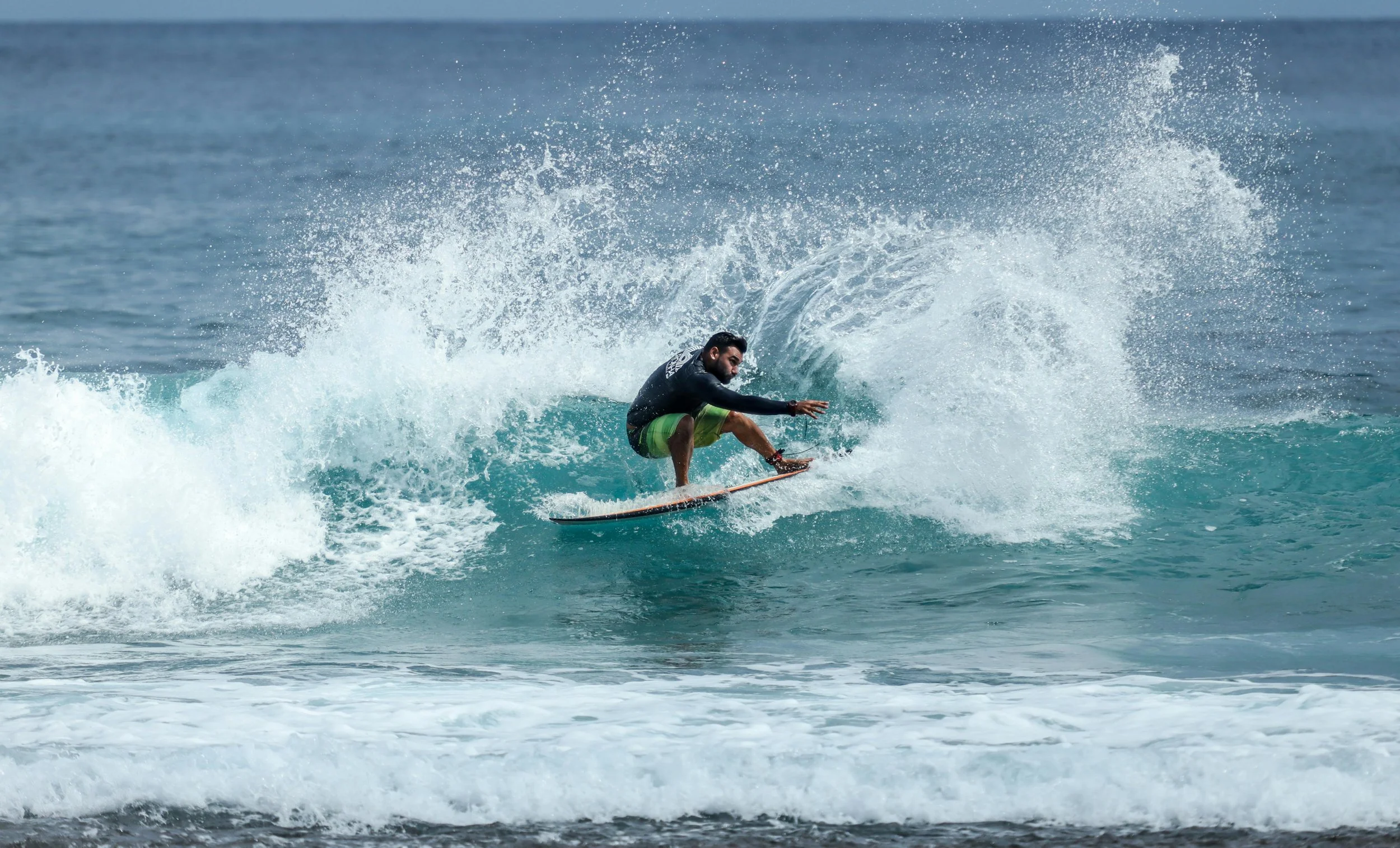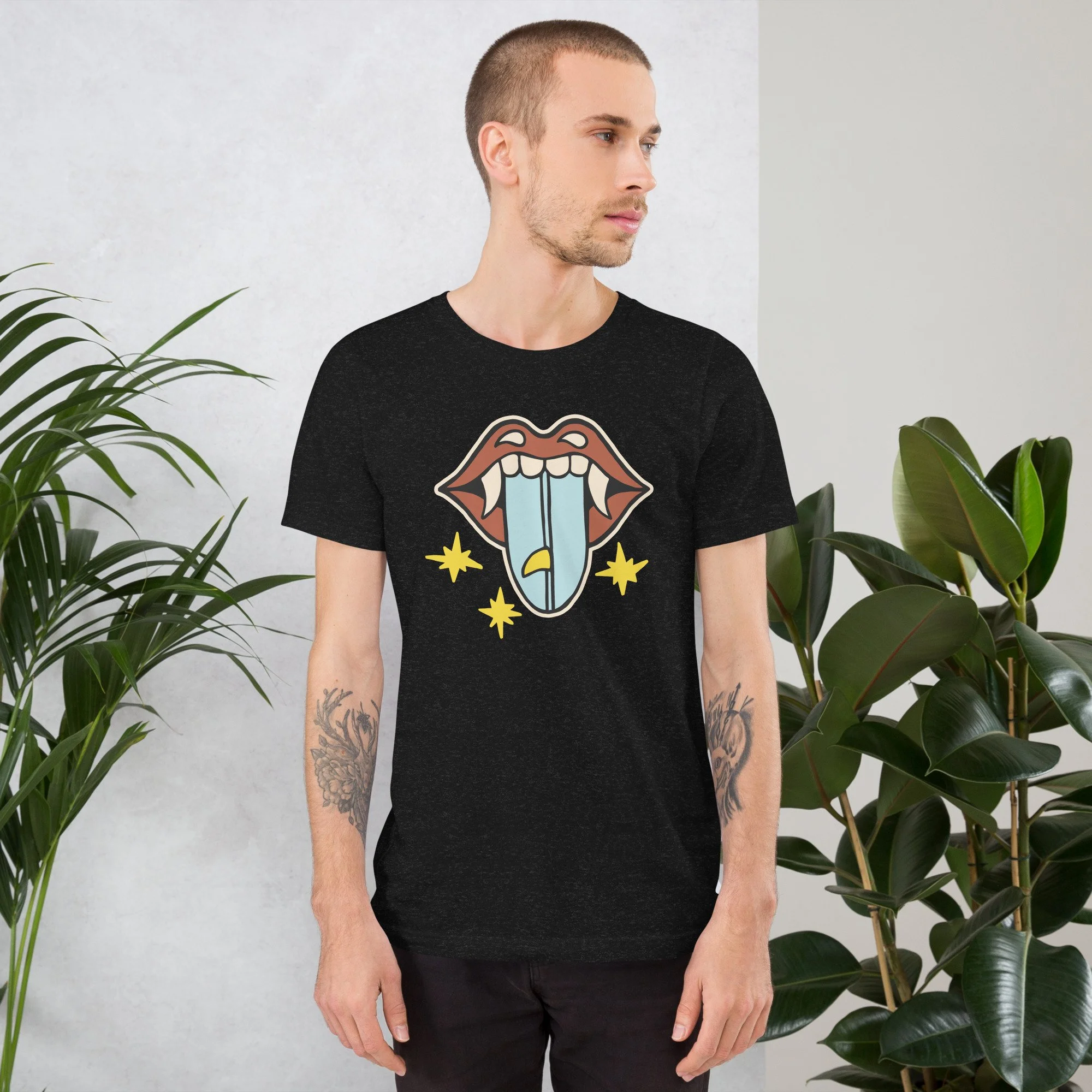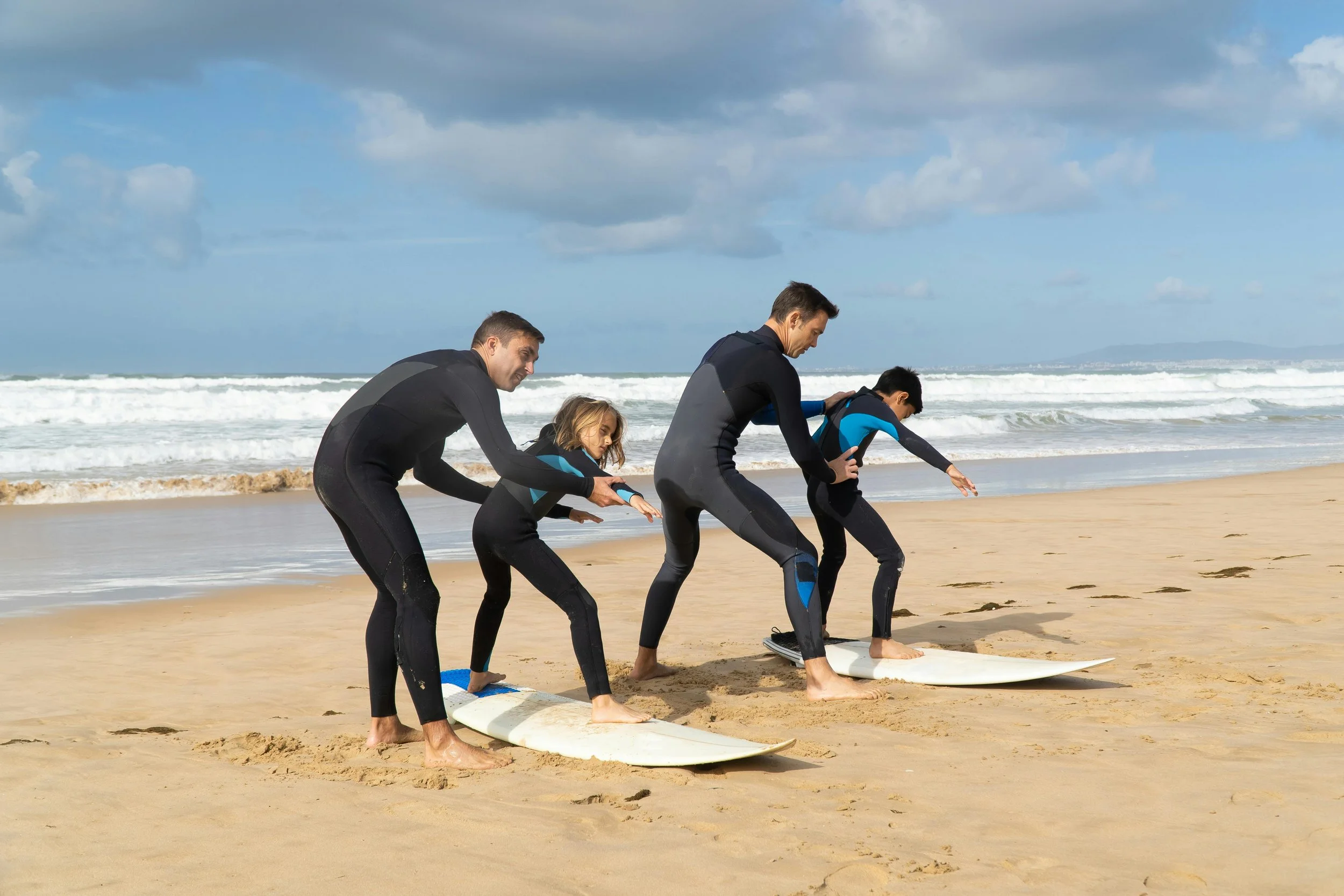14 Tips for Beginner Surfers - Learn and Progress
As you begin to take up surfing, you’ll likely realize it is not the easiest sport to just pick up and rock. Surfing takes time, even for experienced athletes. There are so many variables to consider from your board and equipment to ocean and wind conditions. If you’re new to surfing, we recommend checking out this list of beginner tips. Some of it may seem obvious or boring, but surfing takes patience and consideration.
1. Find the Right Board
In my opinion, a surfboard is unlike most other sports equipment. The difference between different skateboards, snowboards, baseball bats, or basketball shorts is not quite the same as the difference from one surfboard to the next. It’s super important to find the right surfboard to fit your skill level, your height and weight, your style of surfing, and the waves you will be on. You can read Our Guide to the Best Surfboards for Beginners for a few recommendations.
For most beginners, a foam board (or foamie) is the way to go. They’re pretty durable, won’t cause damage to any surfers around you, and protect your safety. And although a beginner surfer may want a fiberglass board, the foamie is really where you should start. There are people that can absolutely rip a foamie, so don’t be discouraged. When you progress off a foamie, it’s helpful to stick with a board with a lot of volume to help you catch more waves and get more experience actually riding waves.
2. Surf Appropriate Waves
Surfing varies so much depending on where it’s done. There are many different types of surf breaks and different wave sizes. At any level of surfing, you want to pick the right waves. Learn about the conditions in our post The Best Surf Conditions for Beginners: A Guide to What to Look For. When I was a beginner, I went out with friends to a few spots with waves that were far too advanced for me and it really killed my enthusiasm. Nobody likes being wrecked repeatedly without catching a single wave. It also can be quite dangerous.
If you have multiple breaks nearby or you’re planning a surf trip, choose somewhere with beginner-friendly waves. Bonus points if you can find an uncrowded lineup! Many intermediate or advanced spots may have beginner waves on the inside. This is something that comes with experience as well. You will get to know the waves you like for your skill level and style. Go after the right waves for your needs. For some surf travel inspiration, you might check out some of the best places to learn how to surf.
3. Get to Know One Spot
This beginner tip is especially important for those living near surf breaks. When you’re learning how to start surfing, you need to learn the ocean. Get to know when the break works well. Look at tides, wind, swell direction, and swell period. When I first started surfing here where we live, I frequently just went down to the beach to check. Now, I can look at conditions before I leave the house and know exactly what boards to bring or leave at home based on what I see with conditions.
While surfing the spot, make mental notes. For example, you might note that this takeoff spot offers a fast ride, while another is a more mellow ride with flat sections. You also can find the best channel to paddle back out. As you get to know a spot more, you’ll know when the takeoff spot changes, where to sit out in the lineup, and how to surf given the conditions.
4. Watch and Plan
This is a step that I feel many beginner surfers skip. We sometimes learn to surf on our own or with surf classes, but this is a step that we don’t often learn about. Yet every experienced surfer does it. So sometime along the way, you have to pick up this habit. Many beginner surf camps will stress the importance of this step in your surfing journey.
Whether it’s your spot you surf every week or a new spot to you, it’s important to stop before you get in the water and watch the waves from shore. Wait at least through a round of set waves. See where they break, where they’re going, where you can get the ride you’re looking for, and where to paddle back out. Before getting in the water, you should have an idea of where exactly to go and what to look for. Of course, conditions can change once you’re in the water, but it’s important to get into the water with purpose.
From the Store
5. Understand Surf Etiquette
This is an important aspect of surfing that many of us learn the hard way. With any activity or sport, there are generally a set of unwritten rules we should follow. As surfing is a bit free and loose, it can seem a bit chaotic at first. When we learn the rules of the lineup and how it all works, it helps in many ways. We stay safe, keep other surfers safe, and don’t piss anyone off.
There are a few basic rules we need to know about surfing out in a lineup with other people, known as surf etiquette.
Priority
The basic of the priority rule is that the surfer closest to the peak gets the priority. If you’re out on the shoulder paddling for a wave and you see a surfer closer to the peak, it’s their wave. Also, if somebody is on a wave, do NOT drop in on them! It’s dangerous, and you could ruin an otherwise solid ride. It will upset someone nearly every time. Also, those on the outside have priority.
Snaking
Snaking is when you paddle around surfers to get to a peak. If there are other surfers waiting closer to the peak, wait for them to catch waves and then move into position. Don’t just paddle out and into the peak if someone is already sitting there.
Paddle Out of the Way
Don’t paddle back out to the lineup right through where people surf. You may cause damage to yourself or the other surfers, and the best case scenario is you’ll have to avoid each other as someone comes zipping past. Find a line back out to the lineup that avoids where surfers are coming through, usually way out on the shoulder.
Communicate
I’ve been in the water in some places where no surfer talks to another surfer. However, there are times where communication is important. Sometimes we get A-frame waves at a specific spot here. This means two surfers can get the wave if they’re communicating effectively. I’ll often shout “Going left! Going left!” if I’m on the left side of the peak so the other surfer on the right side knows they’re good to go right without worrying about me.
Control Your Board
This is a huge mistake I often see beginners make. At all times in a crowded lineup, you should have basic control of your board. An example is when going through the waves, you shouldn’t ditch your board. Learn to duck dive eventually, or turtle roll at the beginning, but don’t just leave your board behind you pulling by the leash. Additionally, when your ride is over, don’t shoot your board out.
Give Respect
Respect is really the bread and butter of surf etiquette. Respect the ocean, respect the waves, respect your board and body, and respect other surfers. When someone is clearly much better than you, you may want to give way when you’re both paddling for a wave and it’s close. If you’re in a new spot, remember that often locals get priority. Respect the local culture, the way things work, and don’t push boundaries.
6. Practice on Land
There are many things with surfing that you can practice on land. This starts with practicing your popup. I have a taped outline of my shortboard on the ground in my office where I often practice my popups. Yes, I know how to pop up and have no issue, but it still is helpful for muscle memory. Especially as a beginner, this can be helpful. You can also practice your popup on the beach before getting in the water. The Surf Strength Coach has a lot of good exercises to practice your surfing out of the water that I highly recommend.
You also might consider something like a surfskate. I know it doesn’t translate 100% to surfing, but I do believe it’s helped both of our surfing. We have a YOW and a Carver, and absolutely love them. They’re looser than a normal skateboard, and help reinforce the mechanics of pumping and turning that can support surf movements. We also love our balance board just to practice balance!
7. Warmup and Stretch
This is true of so many sports, but warming up and stretching are absolute musts. We forget sometimes that surfing is a sport that is taxing on the body. Beginner surfers often don’t have quite the muscle mass or muscle memory that more advanced surfers have, so taking care of the body before and after may be even more important. Surfing works a lot of muscles, and taking care of them with both help you surf better and keep you in the water longer.
Personally, I warm up my core, shoulders, hips, and legs every time before I surf. When I get home, I take the time to stretch. I do go to a gym with a personal trainer several times a week, but I believe stretching and mobility to be more important to my overall health and fitness at this point than actual strength. It helps prevent common surf injuries, keeps me mobile and flexible, and allows me to surf day after day.
8. Train Your Body Outside the Water
On a similar note, if you want to really progress in your surfing from the beginner level, you’ll likely need to build some new muscle. When first starting out, you may notice some obvious ones like sore shoulders. You can find paddling workouts to build paddle strength, and any exercise for your shoulders and back will help.
I also found that I had a lot of room for growth with my core and hips. Surfing uses nearly the whole body, so don’t neglect anything. Strong hips and legs will help you with your popup and balance, and the core should be engaged in pretty much every aspect of surfing. Again, the Surf Strength Coach mentioned above has great workouts. Our personal trainer Andi also works online with people around the world for about $25/hour and we recommend her! You can also find her on Instagram at @EntrenAndi.
9. Learn to Paddle Correctly
One of the best things you can do for your surfing at the beginning is learning to actually paddle correctly. Learning how to paddle your board will help you in many ways. You won’t tire as quickly, you’ll protect your shoulders and rotator cuffs, and you’ll be able to paddle faster to catch more waves. This is especially important as a beginner surfer, as you can build a strong foundation of good habits.
10. Practice Falling Well
This may seem silly at first as nobody wants to really fall while surfing. But it’s important to protect your safety. Many places we surf don’t have super deep waters. As you advance, you may find yourself surfing over reefs or rocks with very little water. Learning how to fall will prevent unnecessary injuries. In general, this means falling flat on the water (starfish style) and not going too deep. Ideally, you never touch the bottom!
11. Learn Everything You Can
General knowledge doesn’t substitute for actual time in the water or time on the wave. But learn what you can. Learn about different surfboard shapes, watch professional surfing, read books about surfing, and remember YouTube is your friend. When my wife transitioned from paddlesurfing to longboarding, we watched a ton of videos with tips for beginners on YouTube. I was surprised at how many useful reminders and new things to try there were for me too!
12. Find a Surf Buddy
This may be easier said than done, but a surf buddy has several benefits. I have a few friends here I surf with regularly, but two (other than my wife) stick out. Both of them are at similar levels to me, super supportive, generally available when I am, and just good dudes. When I’m surfing with my partner or these two friends, I get to watch as they surf slightly differently than I do, they offer feedback when I ask, and they make it more fun. We know each other well and don’t snake each other or steal waves, and can help each other progress.
13. Attend a Camp or Classes
Many surf beaches around the world have classes available. Even if you think you’re beyond needing classes, give it a try. I took classes last year in El Paredón myself. I don’t need help popping up or getting down the line, but wanted some support with my finish on cutbacks while going backside. I was loosing more speed than I wanted, and it certainly helped me!
You can also find many surf camps for beginners that will really focus on the fundamentals. If you have the time, money, and passion, this is my recommendation. Even for us on a 5 or 7 day surf trip, we’ve progressed so much. Really dedicating some time to surfing rather than hitting the waves once every few weeks will make your surfing skyrocket. Attending a surf camp is a great way to kickstart your journey.
14. Loosen Up!
Whenever I take someone out who doesn’t have a lot of experience surfing, this is one piece of advice I repeat incessantly. When we start surfing, we often are rather tight or rigid in order to keep our balance and stay on the wave. Once you can catch a wave reliably and pop up, relax! The tight energy won’t serve you.
Learn to have fun surfing, and relax. Soften your stance, chill out, and don’t overdo it. Even over on the beginner surfers subreddit I see it all the time. Someone shares a video and asks for advice, and part of the advice offered is to loosen up. Don’t overdo it, don’t force things, and take a breath and enjoy yourself!




























